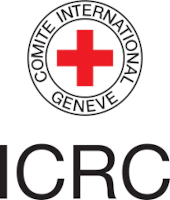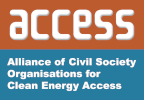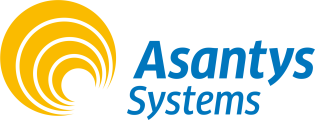Click here to register!
Solar Energy in Powering Agriculture
Overview
By definition solar energy is "Solar energy is the conversion of sunlight into usable energy forms"[1]. The main solar technologies are photovoltaics (PV), solar thermal electricity and solar heating and cooling. Foragricultural production and processing solar energy is a crucial energy source, in particular for irrigation, cooling and drying.
Solar Powered Irrigation
Solar energy presents a huge potential for agricultural irrigation. Experience from past projects has proven photovoltaic pumping systems to be technically mature and suitable for utilization in rural areas of developing countries.
- For more information on PV pumping systems for irrigation see here
- For more information on PV pumping systems in general please see here
- For a case study from Egypt on solar powered irrigation systems please see here
- Solar-Powered Irrigation Systems (SPIS) – Workshop Documentations
- NEW: Manuals and Tools for Promoting SPIS - Minutes of the Workshop
- NEW: Experts' presentations on SPIS in developing and emerging countries
Solar Drying
Up to 70 per cent of agricultural products spoil during the traditional process of open-air drying, especially in tropical and subtropical regions.[2][3] Thus, in many developing countries large quantities of fruits and vegetables spoil. Common reasons areinadequate infrastructure, insufficient processing capacities, and growing marketing difficulties caused by intensifying competition and protectionism in global agricultural markets. Often, drying is carried out at farm level right after harvest, especially with highly perishable crops, at peak harvest time when local markets are saturated. Drying agricultural produce such as vegetables, fruits and meat with thermal energy enables longer storage times and easier transportation - thereby contributing to improving the population's income and supply situation[2]
For more information please see here.
Solar Cooling
While solar cooling remains a niche market, the market has grown considerably in recent years[1].
Cooling and refrigeration is essential in agricultural production and processing, e.g. for preserving food products. It generally is a very energy-intensive process. Solar powered cooling presents an important clean energy opportunity, particularly in rural areas without access to the national grid, but also for other processors. For more information please see here.
PV in Agriculture
PV can be applied for pumping for a wide range of processes, most importantly for irrigation, refrigeration of agricultural products, aeration for aquacultures, but also for electric fencing, poultry lighting and pest control. Application of small PV systems though is limited to the provision of power for activities that require little power input. For energy intensive activities e.g. in rice mills and other agricultural processing PV systems are not an option[4].
Business Models for PV in Agriculture
The study "Enabling PV in the MENA Region - The emerging PV market in Tunisia" analyses four cases, showing that any photovoltaic system installed in Tunisia is amortised during their 20-year project duration, and this no matter what market segment is concerned. Two of those business models apply to the agricultural sector. Find this study here.
The initiative "RaSeed" in Egpyt prsents another case study, promoting the use of Photovoltaic (PV) systems in drip irrigation farming in order to support cost-effective and sustainable agriculture. Therefore, the aim is to introduce high capacity solar operated water pumps - of up to a pump size of 100kW - to the Egyptian agricultural sector. RaSeed targets farm specific optimization of drip irrigation systems that enable maximum fuel savings and water efficiency by taking into account soil compositions and environmental conditions. The initiative has published several infomaterials, including analyses of costs and benefits of solar pumps, please see here.
Specific Publications
- Solar PV-diesel hybrid business planning: This publication by GIZ provides a systematic approach to asses and develop solar PV-diesel hybrid applications - in general, but also within the agricultural and food industry. The document contains a checklist for the major parameters related to the development of technically feasible and economically viable SPV-hybrid business cases for power generation in off-grid areas. For each of these parameters, this checklist presents general specifications and critical issues/recommendations, which should be taken into consideration. Please see Table 2 “Business planning checklist” on page 8 of the document.
- Enabling PV in the MENA Region - Tunisia
References
- ↑ 1.0 1.1 International Energy Agency, 2015. Solar. http://www.iea.org/topics/renewables/subtopics/solar/
- ↑ 2.0 2.1 INNOTECH – Ingenieuresgesellschaft mbH. Retrieved from: http://innotech-ing.com/en/
- ↑ Solar Drying. Retrieved from: https://energypedia.info/wiki/Solar_Drying
- ↑ Van Campen, B.; D. Guidi & G. Best (FAO), 2000. Solar Photovoltaics for Sustainable Agriculture and Rural Development.http://www.fao.org/uploads/media/Solar%20photovoltaic%20for%20SARD.pdf



















